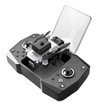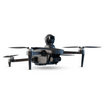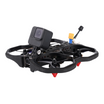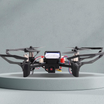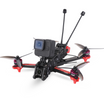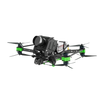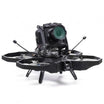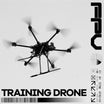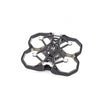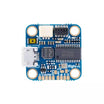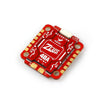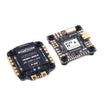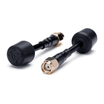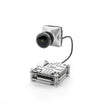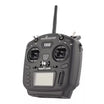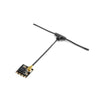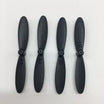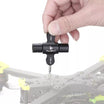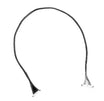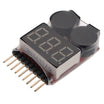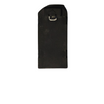In the adrenaline-fueled world of First-Person View (FPV) drones, one component stands as the pivotal armory, keeping its proverbial nose to the grindstone – the FPV video transmitter. Without this unsung hero, the immersive experience that FPV enthusiasts crave would be nothing more than a distant dream.
As the gateway to breathtaking aerial perspectives, FPV video transmitters have undergone remarkable advancements in recent decades, pushing the boundaries of power output and performance. Mounted on the multirotor, these compact yet mighty devices seamlessly integrate with the power distribution board and camera, ensuring a seamless connection that can withstand the inevitable impacts of countless crashes – a rite of passage for every aspiring FPV pilot.
Unlocking the Magic: How FPV Video Transmitters Work
At the core of every FPV adventure lies a remarkable feat of engineering. The video transmitter, connected to the camera, receives the captured video signals and converts them into their radio equivalent. These radio signals are then relayed to the attached antenna, which broadcasts them into the skies, eagerly awaiting reception by the video receiver attached to the pilot's goggles.
Power Output: The Cornerstone of Performance
When selecting an FPV video transmitter, power output is often the first consideration for pilots. Most [FPV drone price in India] options on the market feature transmitters rated between 25mW and 800mW, catering to a wide range of needs and preferences.
It's important to note that higher power output translates to increased heat generation and power consumption from your battery. As such, when flying at higher outputs, it's crucial to get your multirotor airborne as quickly as possible, allowing the airflow to cool the transmitter and prevent potential overheating and damage.
Moreover, if you plan to fly in a group setting, selecting a transmitter with a higher power output might cause signal bleed, leading to interference and potential loss of control – a risk no FPV enthusiast wants to take.
Frequency Bands and Channels: The Language of Communication
FPV video transmitters operate by sending the video feed over specific frequencies, making it essential for both the transmitter and receiver to be tuned to the same channel for stable communication. These devices are classified into bands and channels, with bands representing groups of eight channels spread across the selected spectrum.
Many pilots opt for transmitters with a large number of available bands and channels, providing them with maximum flexibility in their aerial pursuits. Some [top drone brands] offer options with up to five different bands and a total of 40 channels, ensuring you can always find a clear frequency for an uninterrupted FPV experience.
HD Video Transmission: Elevating the Experience
The advent of HD video transmission has ushered in a new era of immersive FPV experiences. Operating at resolutions of 1080p or 720p, HD video transmission breathes life into your FPV feed, bringing you closer to the virtual reality experience that every pilot dreams of.
Whether you're capturing stunning [4K aerial footage] with a [professional drone camera price] or maneuvering an [agriculture spray drone price in India] for precision crop monitoring, HD video transmission ensures that every detail is captured with crystal clarity, enhancing your situational awareness and overall enjoyment.
Additional Features: Enhancing Functionality and Convenience
FPV video transmitters often come equipped with a range of additional features designed to enhance functionality and convenience. From mounted microphones and smart audio capabilities to power filtering for cleaner power delivery and thermal protection to prevent overheating, these features further solidify the transmitter's role as the backbone of your FPV setup.
As you embark on your FPV journey, remember to handle your video transmitter with care. Never power it on without an attached antenna, as this can lead to overheating and potential damage – a lesson learned the hard way by many pilots before you.
In the ever-evolving world of drone technology, FPV video transmitters stand as the beating heart, enabling pilots to transcend boundaries and explore the world from perspectives once thought impossible. Whether you're a seasoned pro seeking the ultimate camera drone for aerial photography or a newcomer in search of the [best and cheapest drone] to start your adventure, a reliable video transmitter is the key to unlocking the limitless potential of the skies.
So, embrace the thrill of FPV flight, and let your video transmitter be your guide to uncharted realms, where every moment is a breathtaking adventure waiting to be captured and shared with the world.
FAQs
1. What is an FPV video transmitter, and what does it do?
An FPV video transmitter acts as the bridge between your drone's camera and your goggles. It receives video signals from the camera, converts them into radio signals, and transmits them via an antenna for your goggles to pick up. Essentially, it translates the visual information into a format your goggles can understand, allowing you to see a real-time first-person view of your flight.
2. What's the deal with power output?
Power output is a crucial factor when choosing a video transmitter. It affects the range of the signal – higher power means a longer range but also more heat generation and battery drain. Most options range from 25mW to 800mW, so consider your flying environment (solo vs. group) and prioritize airflow when using higher power settings to avoid overheating.
3. What are some things to consider when buying a drone, considering the importance of the FPV video transmitter?
When choosing a drone, especially if FPV flight is your priority, consider the video transmitter's specifications (power output, band/channel options, etc.) alongside other factors like camera quality, flight time, and overall budget.
Follow us on Linkedin for latest updates : https://in.linkedin.com/company/inside-fpv

